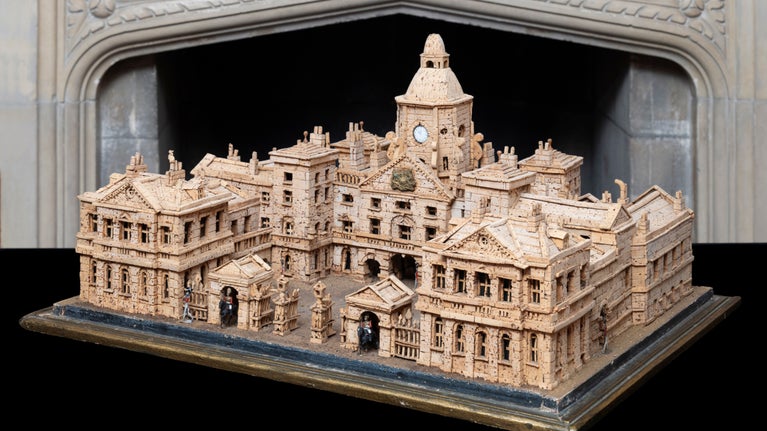
Art and collections
We care for one of the world's largest and most significant collections of art and heritage objects. Explore the highlights, our latest major exhibitions, curatorial research and more.

Joshua Reynolds (1723–92) was the leading portrait painter of the 18th century. An imaginative and creative artist, his portraits were admired for their innovative compositions and ability to capture an individual’s distinctive personality. We look after the largest collection of his works in a historic house setting.
Joshua Reynolds was born in Devon on 16 July 1723, to a middle-class family. Interested in art from an early age, he studied essays by Leonardo da Vinci and practised drawing with his sisters.
At 17, Reynolds started training with an artist called Thomas Hudson. He then travelled to Italy and France and by the 1750s he was firmly established as a portraitist in London. As his social network grew, so did the number of commissions.
Reynolds co-founded the Royal Academy of Arts with 33 other artists in 1768 and became its first President. He was actively involved in its management and delivered a series of lectures, called the Discourses on Art, which contained his beliefs about art theory and practice.
In 1784, Reynolds became the Principal Painter in Ordinary to the King. However, the post seems to have disappointed him, writing that it was ‘of near equal dignity with His Majesty’s Rat-catcher.’
In addition to 76 oil paintings, we also care for 607 print copies of Reynolds's works, with more in bound volumes, and 77 copies of his written works. This collection forms the largest body and widest distribution of works by Joshua Reynolds in the British historic house setting.
Joshua Reynolds painted historical and theatrical subjects as well as portraits, and experimented with different types of paints. He had a powerful influence on generations of later artists and his paintings continue to appeal to a wide range of audiences today.
Today, we're continuing to to look after, research and interpret the works by Reynolds in our care. We conserved the four paintings shown here as part of the 300th anniversary of Joshua Reynolds’s birth in 2023.
Conservation work revealed a devil-like figure in this painting which had been hidden. It was obscured by a lot of overpainting (when new paint is layered over the original work) as well as six layers of varnish. Reynolds added the ‘fiend’ to his painting of the dying Cardinal Beaufort, a scene from Shakespeare’s Henry VI Part II. The overpainting was identified through paint sampling and imaging techniques, such as observing the surface in infra-red and ultra-violet light.
Use the slider to compare the painting before and after it was conserved, and see if you can detect the once-hidden figure looming above the bed.
Joshua Reynolds was a central figure in British art during the Georgian period. He had a powerful influence on generations of later artists and his paintings continue to appeal to a wide range of audiences today.
Today, we continue to look after, research and interpret the Reynolds’s works in our care, making them accessible to everyone.

We care for one of the world's largest and most significant collections of art and heritage objects. Explore the highlights, our latest major exhibitions, curatorial research and more.
The 13,000 oil paintings in our care are nearly all displayed in the houses of their historic owners. Learn about the stories behind a selection of the artworks and their owners.

We look after the largest collection of tapestries in the UK and one of the largest in the world. Learn more about these status symbols and explore some of the best examples of this craftmanship at the places in our care.

Explore the artworks in our collections that capture the beauty of sunrise and sunset. See how artists have used seascapes and sunlight to bring to life peaceful scenes and industrial backdrops alike.

Explore a selection from more than half a million books and manuscripts in the collections we care for. Libraries Curator Tim Pye takes a closer look at some of the most significant works.
